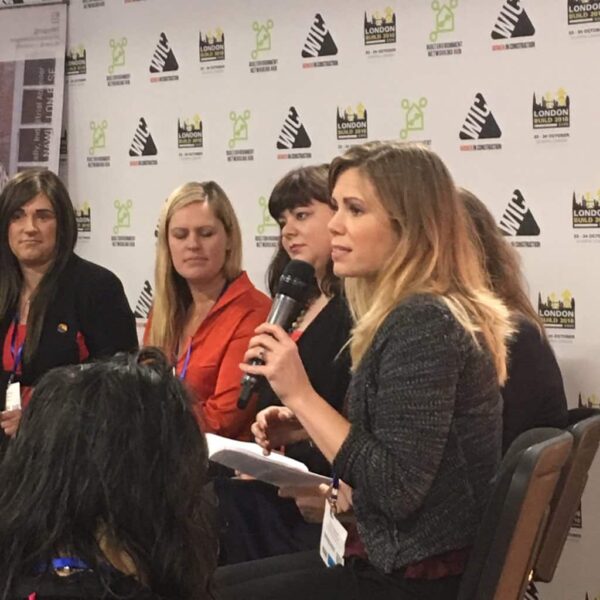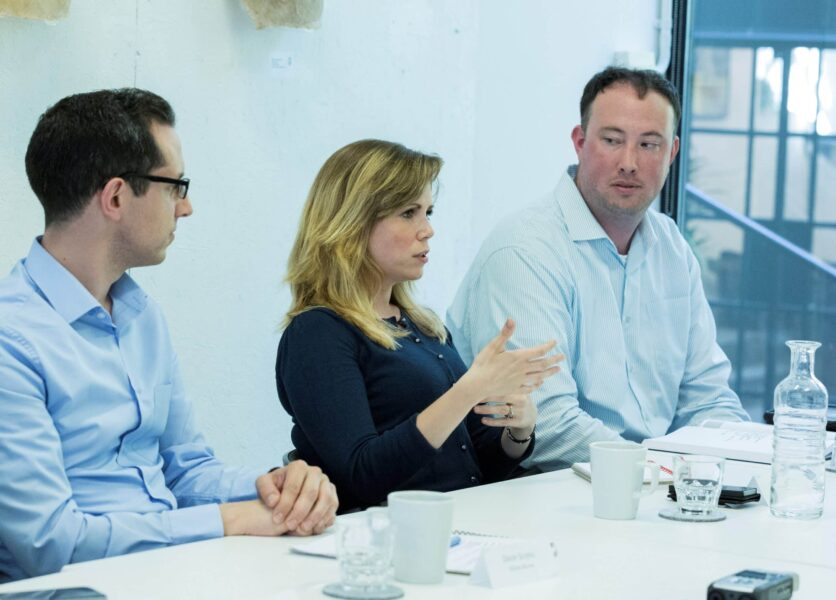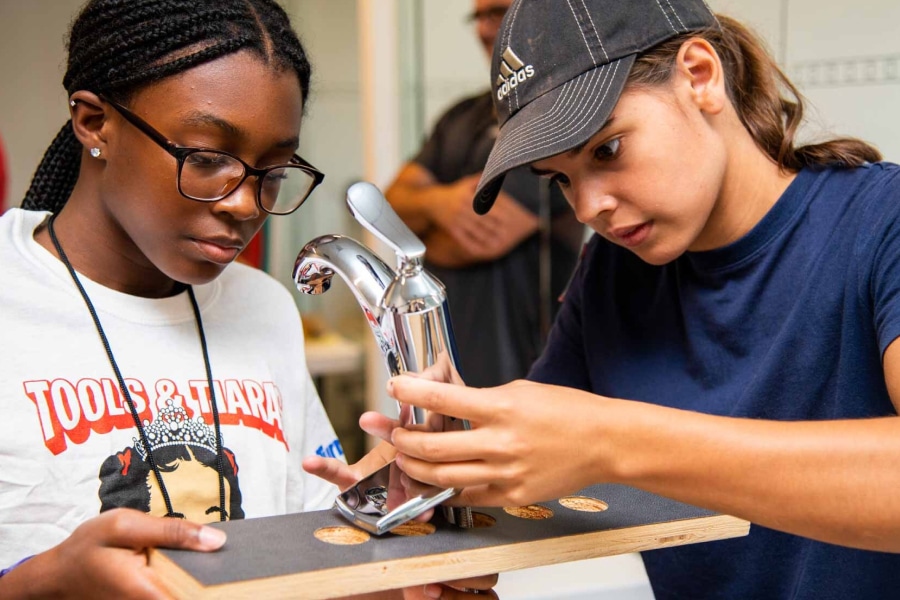Construction is traditionally regarded as a man’s world. Figures from the Office for National Statistics show that in the third quarter of 2021, out of a total UK workforce of 3.1 million there were just 311,000 women in construction. This figure was up from 277,000 in the same quarter the previous year, but the statistics still reveal how male-dominated the sector is.
Women should be able to forge a career in construction, whether that means working on a building site or filling all manner of other roles, from site manager to civil engineer, architect to cost consultant—just as men do. But as with other sectors, in many instances women have more hills to climb and hurdles to overcome to achieve the recognition they deserve.
Progress is being made to address the sector’s record around diversity and equality, yet sticking points remain, not least regarding pay. Gender pay gap research shows that across some of the biggest firms in the industry women are paid 26% less than men.
Still, these issues fail to deter some women from seeking work in the sector, with many finding success in their chosen field.
With this in mind, and in recognition of Women in Construction Week, Built spoke to Vicki Reynolds of construction services firm i3PT. We asked about her job, how she got into construction, the challenges she’s faced as a woman in the industry, how these can be overcome and the satisfaction that comes with her role in helping to develop a built environment.
Built: Could you explain your role?

Reynolds: I’m the chief technology officer for i3PT, which is a company that provides a number of key services to the construction industry. We have also developed and supply an end-to-end project delivery platform, which uses detailed and secure workflows to track quality issues, design queries, technical submittal reviews and much more. Our primary aim is to create a culture of transparency and clear accountability throughout all stages of an asset’s development and maintenance. My role as CTO involves heading up technology strategy and implementation for both the software and services sides of the business.
Built: How did you enter the sector?
Reynolds: I fell into construction by accident in my mid-20s, after hopping across several other industries first. Originally I trained at a drama school in London and worked for a couple of years as a professional actor. Although this profession was fun, I found it unfulfilling and inconsistent. I then went on to work for a facilities management company and a software development company, before finally getting a “temporary” job as a document controller with Turner & Townsend on one of the biggest mass developments in London. I was convinced that this was going to be another steppingstone—somewhere else to gain some experience and earn a salary while I decided what I really wanted to do with my life. But unexpectedly, the construction industry immediately hooked me in. I really enjoyed being on site, and I became fascinated by the potential for growth and change within an industry that still seemed to be relatively early on in its journey toward digital transformation. I began to care about solving problems, and I found the challenges I faced to be thrilling rather than intimidating. From there I just continued to learn and grow, taking every opportunity I could to expand my knowledge and experience.
Built: Were you aware at that stage of senior construction roles being filled by women?
Reynolds: I only knew of a handful of such women for the first couple of years in my construction career, one of whom was Patricia Moore, now the managing director at Turner & Townsend UK, whose office was near my desk. She was a natural leader, respected by everyone in the business. By complete fluke I ended up sitting in the same train carriage as her on the way back from a conference. She recognised me and my colleague and called us over to sit with her. We spent the rest of the journey chatting about work, family and anything else that came to mind. She explained how she had progressed in her career, the struggles she’d faced, but also the rewards. When I left the train I thought, “OK, that’s exactly what I want to do, too.” I’ve always acknowledged that construction was a male-dominated industry but that never affected my ambitions. Maybe it was naivety or the fact that I love a challenge, but I saw it more as an opportunity to effect change. I’ve had some rough experiences and met some very difficult people, but through groups such as Women in BIM and the UK BIM Alliance I have always felt supported and surrounded by strong allies and friends.
Built: What have been your career highlights?

Reynolds: Within the construction industry I have finally found my “forever career,” and I couldn’t be happier. Over the last decade I have grown to be an active member of the digital construction community both locally and globally, sitting for a number of years as the proud global vice chair for Women in BIM, a UK BIM Alliance ambassador, a member of the CIOB’s special interest group for digital and part of the IET’s built environment panel. I have written and delivered workshops and lectures on digital construction and construction technology for audiences in the UK, Ireland, Germany, the Netherlands, Canada, India and China, and I am part of the building regulations advisory committee for the golden thread. I feel as though I’m genuinely having an input into the digitalisation and improved safety of the built environment, and of that I am immensely proud.
Built: So what are the biggest obstacles for women in construction?
Reynolds: One of the biggest hurdles to being a woman in a male-dominated environment is that you’re instantly more memorable. In a room where you look, sound and dress differently to everyone else you can feel as though the spotlight is on you, and in that scenario it’s harder to take chances or risk being wrong. I can empathise with women and people in other minority groups that prefer to sit back and be observers than risk saying something incorrect and drawing even more attention to themselves. Another is gender discrimination because of childbirth. Unprompted, I’ve had men on numerous occasions explain to me why hiring a woman of a certain age is a risk to their business as they’ll have to pay maternity leave if that woman gets pregnant. This, along with the fact that the industry is still learning how to properly support parents of any gender with young children, especially if they’re single, can cause enormous stress and significantly disrupted career progression.
Built: What is the best way to overcome these hurdles?
Reynolds: It’s very important to promote and support women in construction, but it’s also important that this isn’t done in a way that causes a disadvantage to, or undermines, a woman’s achievements. Quotas are one example. When implemented too aggressively or not planned appropriately, quotas can lead to women being promoted before they’re ready and potentially set up to fail. If quotas are too well publicised within an organisation or industry it can also lead to people assuming that a woman got a job because of her gender, not her skill or competence. Whether this is true or not, it undermines every other one of her achievements and makes it extremely difficult to progress further with integrity.
It would be easy to sit back and do nothing about the gender imbalance in construction, but that would be detrimental to our industry and the projects we deliver. Around half of the people living in and using the assets we build will be female, so surely a representative percentage of people designing, constructing and maintaining those assets should also be women, to ensure that they’re developed in a way that is fit for purpose and inclusive. The same goes for accessibility—people with disabilities must be able to access the buildings we build safely and comfortably, and therefore they must be included in that process, preferably by being represented within the workforce. Diverse teams have been shown time and time again to be more innovative, more productive and to perform better financially.
Built: The issue of equality still needs to be addressed, doesn’t it?
Reynolds: Definitely. We need to create real equality in the workplace. Major organisations are required to report on their gender pay gap annually, and year after year these reports still highlight a lack of women in senior leadership and a significant pay gap between men and women. If we want to attract and retain skilled women then we need to make sure that they feel that they’re valued the same as their male counterparts. So I say to organisations, look at your payroll—are women in your organisation getting paid less than their male peers in the same role? If they are, then fix it.
Built: So how does the industry create the environment to attract and retain female talent?
Reynolds: We need to show young girls, and their parents and carers, that construction is a viable and exciting career choice. When I was growing up, construction was the industry that naughty boys ended up in—the boys who couldn’t concentrate in class were sent to do bricklaying at the local community college, instead of doing “real” schoolwork. If you’d have told 15-year-old me that I would eventually be working in construction, I’d probably have panicked, thinking, “How did it all go so wrong?” Even when I go into schools now to present during career days the kids can never guess my profession before I reveal it, and they’re shocked when I do. They just don’t imagine anyone who looks like me when they think about construction.
We need to celebrate construction in general in schools. We must better showcase how diverse and fascinating the industry is, and how great a career you can have. And then we need to better communicate the different and exciting range of roles and specialisms available. Girls need to see the women whom they aspire to emulate already working in the construction industry. With this in mind, I would encourage all of the women already here to go out into schools and colleges to help inspire the next generation of female construction managers, architects, cost managers, plumbers and structural engineers.











